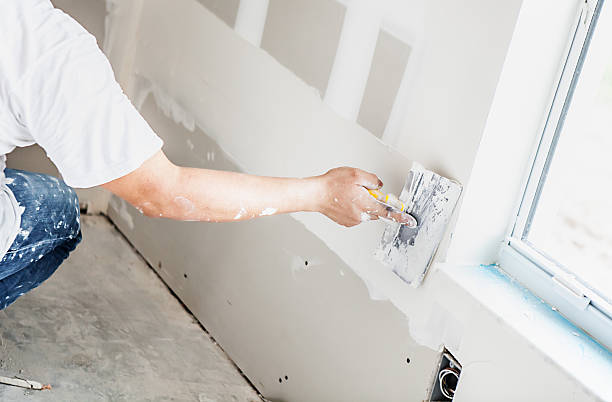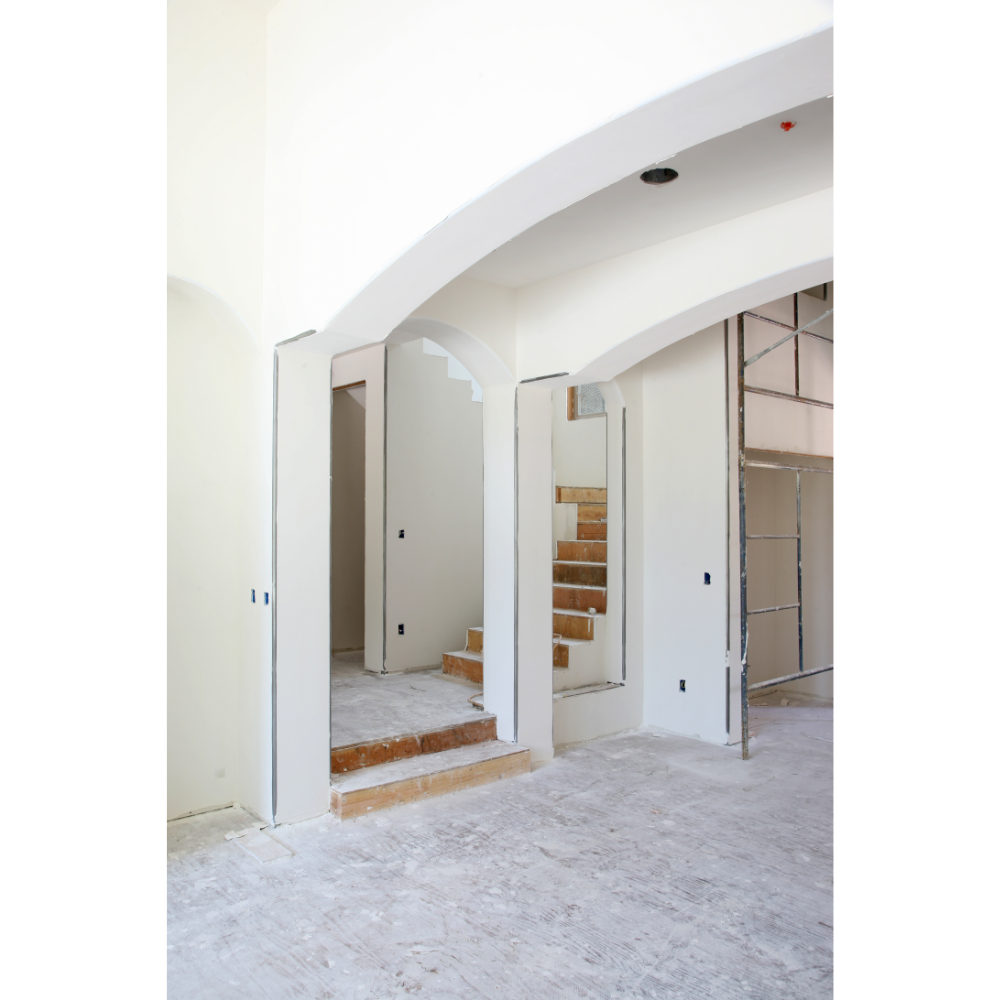Premier Drywall Hamilton Services for Homes and Workplaces
Wiki Article
Cost Effective Drywall Repair Service Solutions: Say Bye-bye to Cracks and Holes in Your Walls
Don't stress, budget-friendly drywall repair work services are below to save the day. From evaluating the damages to applying ending up touches, we will lead you with each step of the fixing process.
Assessing the Damage
When encountered with the job of evaluating drywall damages, it is critical to carry out a systematic and detailed assessment in order to accurately establish the degree and nature of the repair work required. This analysis process is vital as it lays the structure for establishing a effective and effective fixing strategy.To start with, one need to thoroughly inspect the damaged location to identify any type of visible indications of cracks, holes, or water damages. It is important to examine the size, shape, and deepness of the damages, as well as its place on the drywall surface (drywall Hamilton). This initial examination assists in recognizing the severity of the issue and help in identifying the ideal repair work strategies and materials required
Additionally, it is important to look for any underlying problems that may have created the damage, such as plumbing leaks or architectural troubles. These underlying problems should be resolved and resolved to prevent future damage and guarantee the longevity of the fixing.
In addition, it is a good idea to tap the broken location lightly to identify any kind of loosened or hollow spots. This touching strategy aids in recognizing potential locations that might call for additional interest during the repair work process.
Collecting the Essential Devices
To successfully finish the drywall repair work process, it is vital to gather the necessary devices. Having the right devices handy will enable you to efficiently and effectively repair cracks and holes in your walls. Below are some crucial tools you will need:- Putty knife: This device is utilized for scraping off old paint and smoothing the surface area of the fixed location. It is available in different dimensions, so select one that suits the dimension of the repair work.

- Sandpaper: After using the patching compound, sandpaper is used to smooth the surface area and mix it effortlessly with the remainder of the wall surface. Select a medium-grit sandpaper for best results.
3. Joint compound: Additionally understood as spackle or mud, joint compound is made use of to fill up cracks and openings. It is readily available in powder type or pre-mixed. Choose pre-mixed substance for ease.

- Patching tape: This self-adhesive mesh tape is made use of to strengthen the joint substance and stop cracks from reappearing.
- Paintbrush and paint: Once the fixing is total, a paintbrush and paint will certainly be needed to match the shade and texture of the existing wall surface.
Patching Small Openings and Cracks
Are you confronted with the task of covering little openings and cracks in your drywall? Do not fret, with the right devices and techniques, you can conveniently fix these flaws and recover the smooth appearance of your wall surfaces.To begin, collect the necessary products for the work, including a putty blade, sandpaper, spackling compound, and primer. Start by cleaning up the area around the hole drywall installation or crack to get rid of any type of loosened debris or dirt. Then, make use of the putty blade to use a slim layer of spackling compound over the damaged area. Make certain to load the hole or crack totally, smoothing it out with the putty blade.
As soon as the substance is completely dry, lightly sand the patched area to create a smooth surface. Beware not to sand way too much, as this can damage the bordering drywall. After fining sand, clean away any kind of dirt with a clean cloth.
To finish, apply a coat of primer over the patched location to make sure a smooth blend with the surrounding wall surface. Once the primer is completely dry, you can paint the repaired area to match the rest of your wall.
Fixing Larger Damaged Areas
For repairing bigger harmed areas on your drywall, you will certainly require to adhere to a somewhat various process than when patching small openings and cracks. If the damage is minor, you can continue with the repair procedure. Keep in mind, repairing bigger harmed areas may call for even more time and initiative, but it is possible with the right tools and strategies.Finishing and Paint Methods
After successfully fixing larger damaged areas on your drywall, the following action is to understand the completing and painting techniques to attain a seamless and professional-looking result. Completing refers to the process of preparing the fixed location for painting. It entails using joint substance to cover the fixed area and mixing it with the bordering wall.Choose for a high-quality acrylic latex paint that matches the existing color of your wall surfaces. Prior to painting the repaired location, it is recommended to prime it with a top quality primer. Use a brush or roller to apply the paint, starting from the sides and functioning your means in the direction of the.
Conclusion
Assessing the damage, collecting the essential devices, and making use of the proper methods, such as patching and fixing, will assist recover your wall surfaces to their original problem. With these affordable drywall repair work remedies, you can say farewell to unsightly splits and holes in your walls.Putty blade: This tool is made use of for scuffing off old paint and smoothing the surface area of the fixed location.For fixing bigger harmed areas on your drywall, you will certainly require to adhere to a somewhat various process than when patching tiny openings and fractures. Bear in mind, fixing larger harmed locations may call for more time and initiative, yet it is possible with the right devices and methods.
After successfully repairing bigger harmed areas on your drywall, the following step is to master the completing and repainting techniques to accomplish a seamless and professional-looking result (drywall installation). It involves using joint compound to cover the repaired location and blending it with the bordering wall surface
Report this wiki page